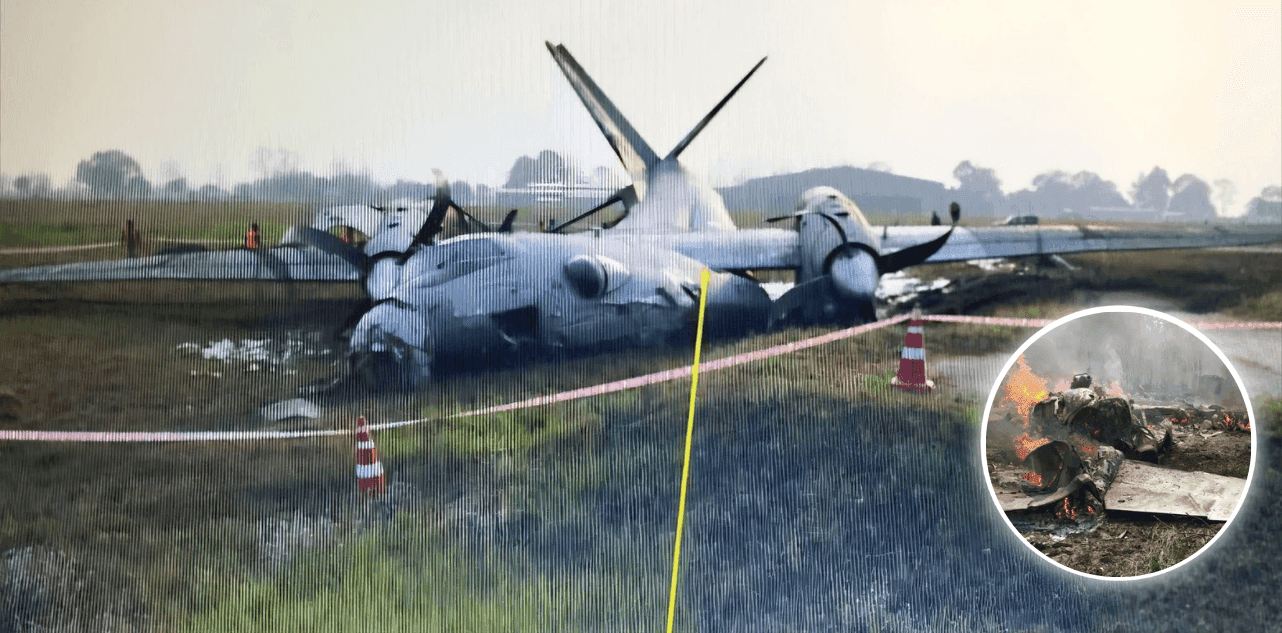Monday 17 November 2025
“How Many More Siddharths?": Public Fury at IAF's Ongoing Operation of Aging Jaguar Fighter Aircraft
Share

India is grieving an additional Jaguar crash in the meanwhile, netizens are wondering why a plane pushed toward retirement decades prior by its original creators continues to fly and crash sacrificing so many precious lives?
When the SEPECAT Jaguar entered the Indian Air Force (IAF) in 1979, it was the talk of the town. The British and the French jointly designed and produced this Anglo-French fighter aircraft that was fitted with precision-guided missiles, state-of-the-art attack and navigation, and enhanced survival features, making the IAF light years ahead in deep-strike capability.
One Jaguar combat aircraft had crashed in Haryana near Ambala on a flight on training sorties in early April. Fortunately, the pilot had ejected safely, and no civilian lost their lives. A few weeks ago, a Jaguar had gone down off Jamnagar in Gujarat. There, unfortunately, Flight Lieutenant Siddharth Yadav was killed.
Two crashes, both of the same aircraft and one of them being fatal, in a month's time. Not a coincidence to any of us—its sheer negligence.
France retired Jaguars in 2005. The UK retired them in 2007. Others retired them or sold them to museums. India still has around 120 Jaguars—many restored but still in the air on 40-year-old or older airframes.
The untimely death of Flight Lieutenant Siddharth Yadav has been an election-season lightning rod for public anger. Social networking sites buzzed the same question, posed in much the same manner by civilians and defense personnel alike: Why is the government risking lives by ongoing use of ageing aircraft?
The #JusticeForSiddharth hashtag trended a few hours later. There were condolence messages left by citizens, others expressing their grief and anger—at not the IAF, though, but Delhi policymakers.
One editorial stated**: "He didn't die in battle. He died in a cockpit that could have been grounded 20 years ago."**
Another editorial stated: "You can spend on luxury aircraft for politicians but not on new aircraft for our pilots?"
That IAF's Jaguar fleet is old is as much true that IAF has already made a public compromise, either way. Short of inducting the new generation aircraft like Tejas Mk2 and AMCA to full capability, retirement of the old aircraft en bloc would leave gaps—particularly in strike.
Modern replacements cost billions, and manufacturing delays are common. In the meantime, the IAF is caught in a difficult balancing act—maintaining fleet numbers while putting pilots in
Some retired-Air Marshals and security personnel have also joined public outrage. "These are aircraft of a bygone era. Whatever the sophistication in avionics refurbishment, you cannot give new wings to old bones," growled an irate retired officer.
The government collected vast revenues during the past few years putting money into native defense production within the nation, and deals such as the Rafale deal introduced newer gear to the Indian inventory. Replacing each ancient fighter one by one, however, costs and takes a lot of time.
But collective conscience is one: never should delay in budgeting permit someone to cause a person to lose the life of a boy like Siddharth Yadav. The cost of maintaining aircraft airworthy beyond their shelf life is now being calculated not only in rupees, but lives.
IAF is supposedly making a five-year plan for the retirement of Jaguars. However, after two accidents within one month, its a general opinion that the cut-off time needs to be hastened. The suggestion from Defence strategists is:
Increased follow-on or lease-abroad orders of Rafales
Full phase out of twin-seater trainer Jaguars entirely
Full utilization of full-mission simulators with the intent of decreasing the amount of risk whilst flying
Greater specificity in crash investigation and overall health of the fleet
The memory of Flight Lieutenant Siddharth Yadav now hangs in the public eye—not that of a martyr alone, but of a level of institutional dragging feet and suicidal complacency.
As India looks toward a greater, brighter, and safer air force, ground zero cries out in a voice of unadulterated fact: sentimentalizing vintage aircraft as workhorses has to stop before another pilot dies.
Newsletter
Stay up to date with all the latest News that affects you in politics, finance and more.